1. Preparatory knowledge
1.1 simplest hash - count the number of characters
1. Title Description
Enter a string and output the number of each character in the string
For example: simple_hash(“abcdefgaaxxy”)
Output:
[a][97]:3
[b][98]:1
[c][99]:1
[d][100]:1
[e][101]:1
[f][102]:1
[g][103]:1
[x][120]:2
[y][121]:1
2.C + + code implementation
class solution {
public:
//1. The simplest hash is to input the string and output the number of repeated characters in the string
void simple_hash(string str){
int char_map[128] = { 0 };
for (int i = 0; i < str.length(); i++) {
char_map[str[i]]++;
}
for (int i = 0; i < 128; i++) {
if (char_map[i] > 0) {
printf("[%c][%d]:%d\n", i, i, char_map[i]);
}
}
}
};
1.2 hash table sorting integer
1. Title Description
Input: {999, 1444, 7, 20, 9, 1, 3, 7, 7}
Output: 1,1, 3, 7,7,7,9444999
2.C + + code implementation
class solution {
public:
vector<int> sort_hash(vector<int>& array){
vector<int> result;
int hash_map[1000] = {0};
for (int i = 0; i < array.size(); i++) {
hash_map[array[i]]++;
}
for (int i = 0; i < 1000; i++) {
for (int j = 0; j < hash_map[i]; j++) {
result.push_back(i);
}
}
return result;
}
};
1.3 hash mapping problem
1. Hash mapping of any element
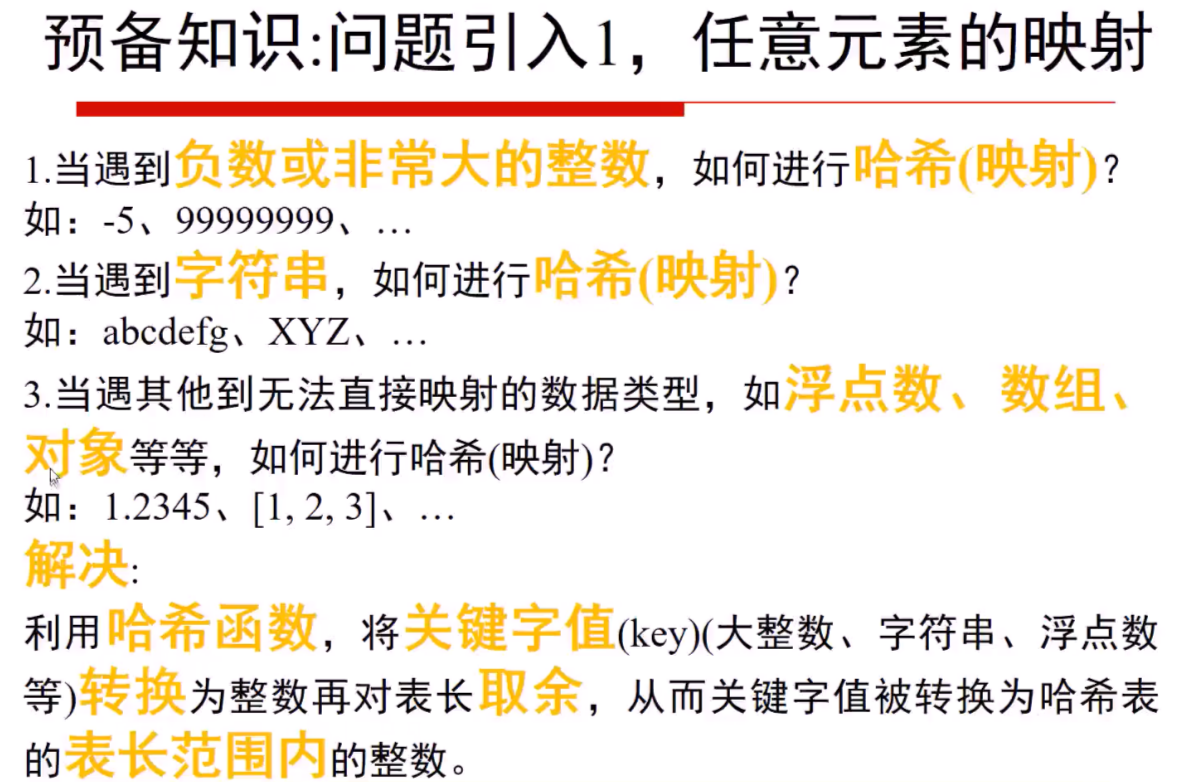
2. Hash mapping conflicts
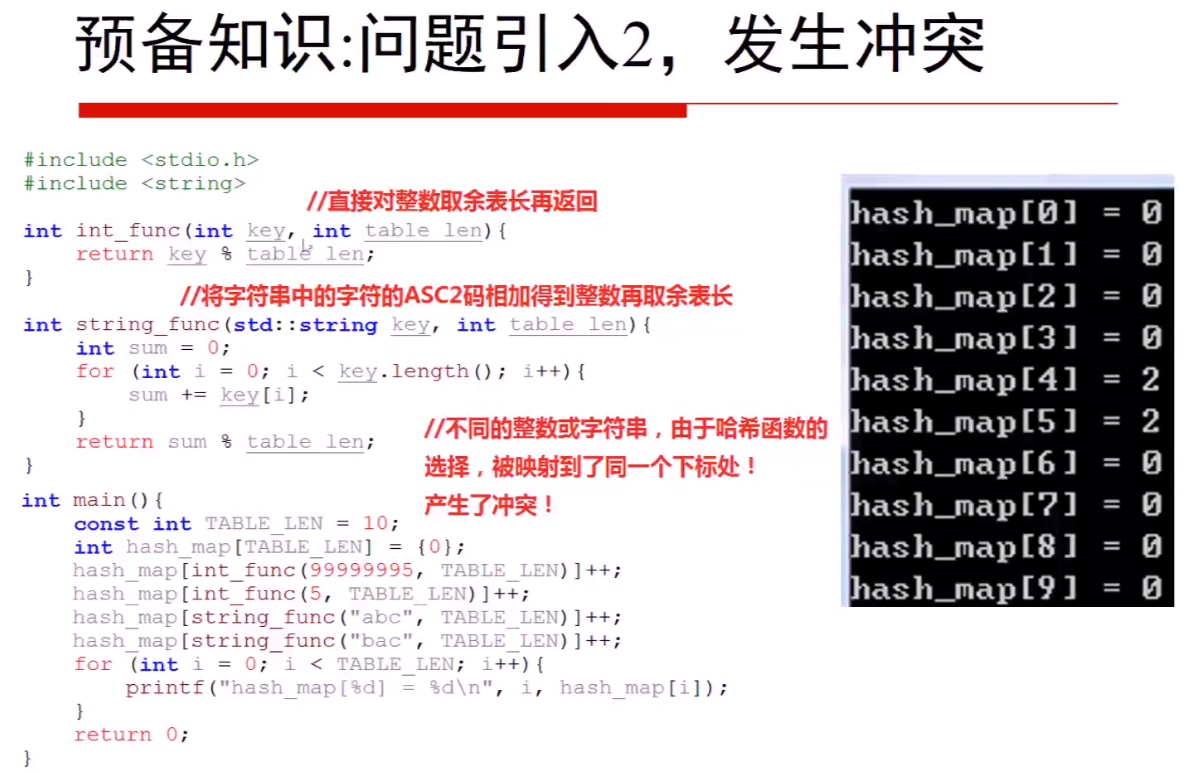
3. Zipper method to solve conflict
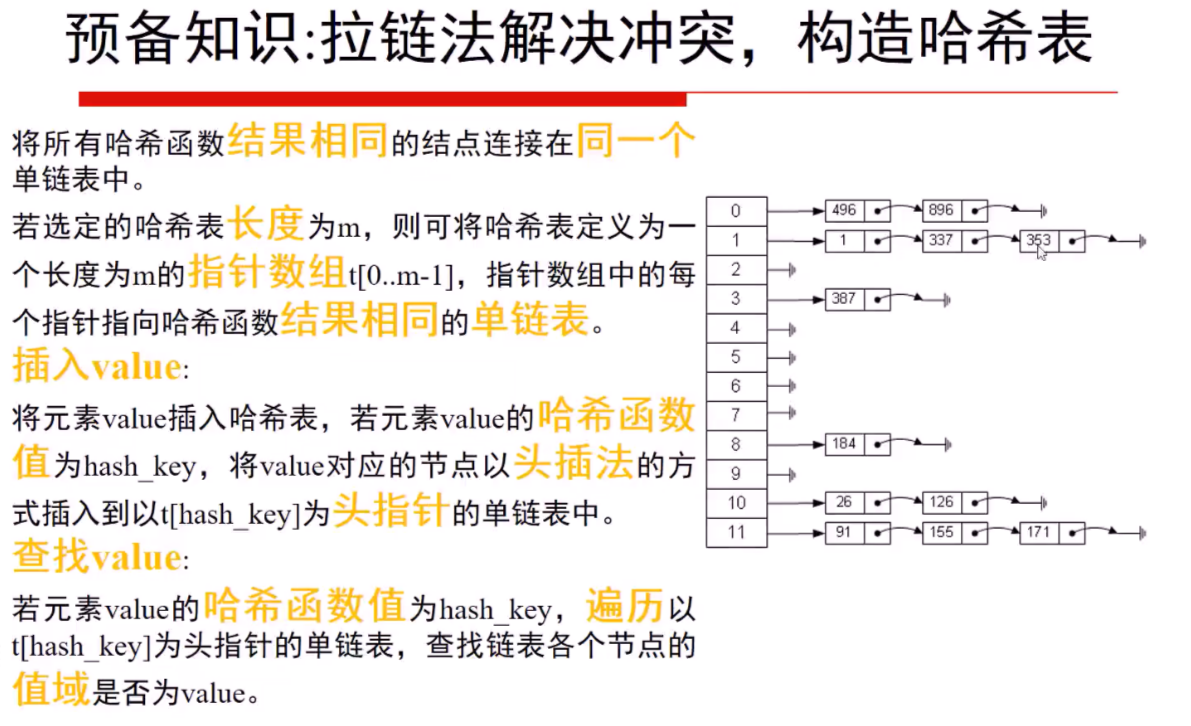
int solution::hash_func(int key, int table_len) {
return key % table_len;
}
void solution::insert(ListNode* hash_table[], ListNode* node, int table_len) {
int hash_key = hash_func(node->val, table_len);
node->next = hash_table[hash_key];
hash_table[hash_key] = node;
}
bool solution::search(ListNode* hash_table[], int value, int table_len) {
int hash_key = hash_func(value, table_len);
ListNode* head = hash_table[hash_key];
while (head) {
if (value == head->val) {
return true;
}
head = head->next;
}
return false;
}
2. Longest palindrome string
2.1 Title Description
Given a string containing uppercase and lowercase letters, find the longest palindrome string constructed from these letters.
During construction, please pay attention to case sensitivity. For example, "Aa" cannot be regarded as a palindrome string.
Example 1:
Input:
"abccccdd"
Output:
7
Explanation:
The longest palindrome string we can construct is "dccaccd", and its length is 7.
2.2 C + + code implementation
class Solution {
public:
int longestPalindrome(string s) {
int array[123]={0};
int count=0;
for(int i=0;i<s.size();i++){
array[s[i]]++;
if(array[s[i]]%2==0){
count+=2;
}
}
if(count<s.size()){
count++;
}
return count;
}
};
3. Word rules
3.1 Title Description
Given a regular pattern and a string str, judge whether str follows the same rule.
The following here refers to perfect matching. For example, there is a corresponding law of two-way connection between each letter in pattern and each non empty word in string str.
Example 1: input: pattern = "abba", str = "dog cat cat dog" output: true Example 2: input:pattern = "abba", str = "dog cat cat fish" output: false Example 3: input: pattern = "aaaa", str = "dog cat cat dog" output: false Example 4: input: pattern = "abba", str = "dog dog dog dog" output: false
3.2 algorithm ideas
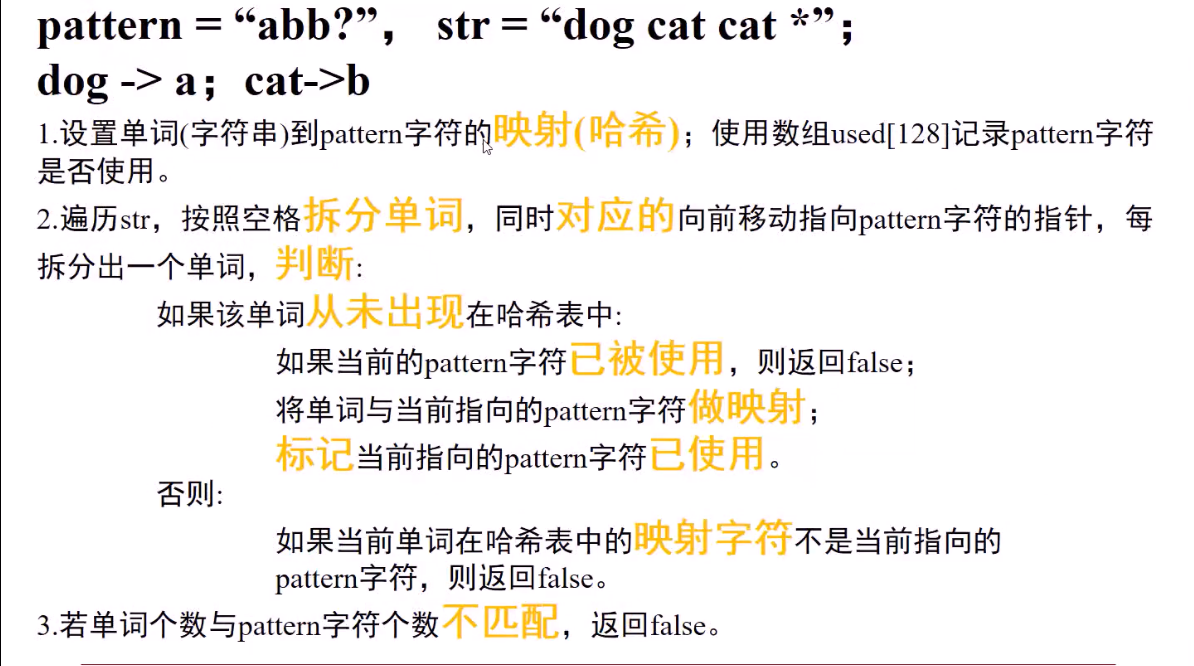
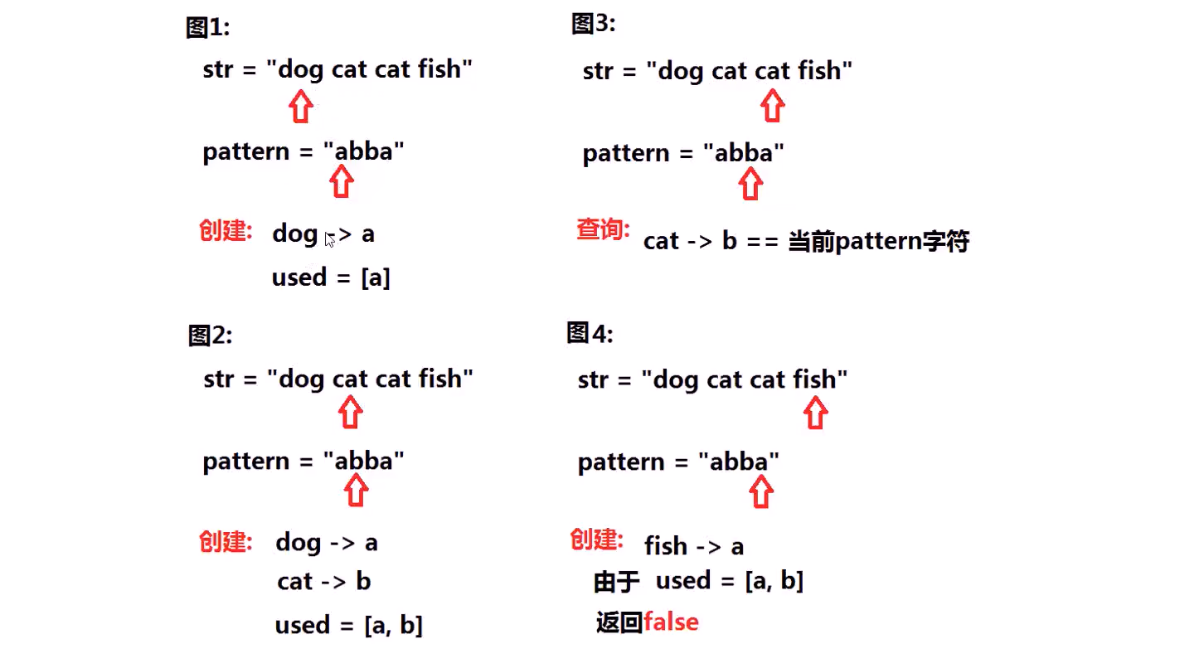
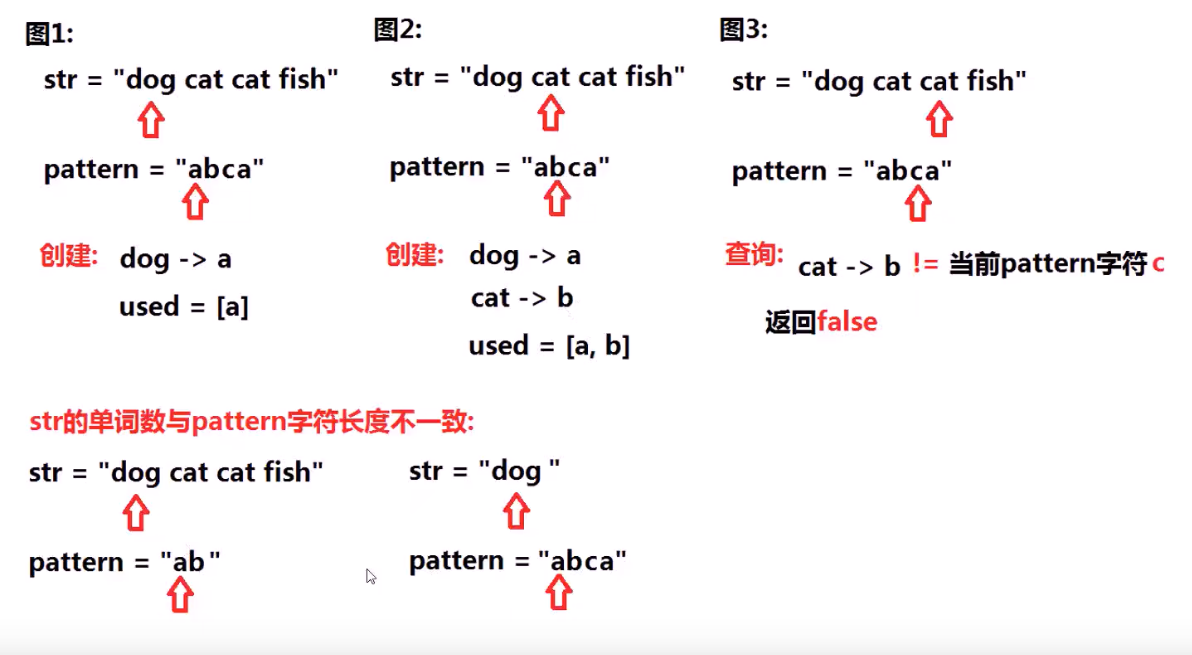
3.3 C + + code implementation
class Solution {
public:
bool wordPattern(string pattern, string s) {
map<string,char> word_map;
int used[128]={0};
string word;
int pos=0;
s.push_back(' ');
for(int i=0;i<s.length();i++){
if(s[i]==' '){
if(pos==pattern.length()){
return false;
}
if(word_map.find(word)==word_map.end()){
if(used[pattern[pos]]==1){
return false;
}
word_map[word]=pattern[pos];
used[pattern[pos]]=1;
}
else{
if(word_map[word]!=pattern[pos]){
return false;
}
}
pos++;
word="";
}
else{
word+=s[i];
}
}
if(pos!=pattern.length()){
return false;
}
return true;
}
};
4. Grouping of letter words
Title Description
Given an array of strings, combine letters and words together. Letter ectopic words refer to strings with the same letters but arranged differently.
Examples: input: ["eat", "tea", "tan", "ate", "nat", "bat"] output: [ ["ate","eat","tea"], ["nat","tan"], ["bat"] ]
4.2 algorithm ideas
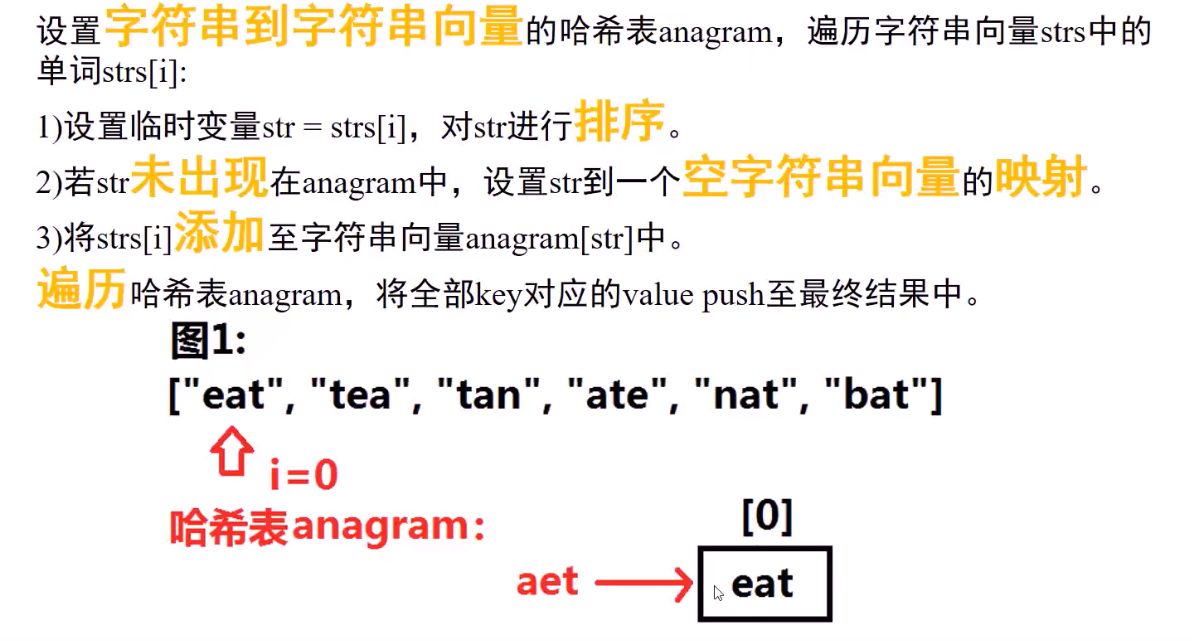
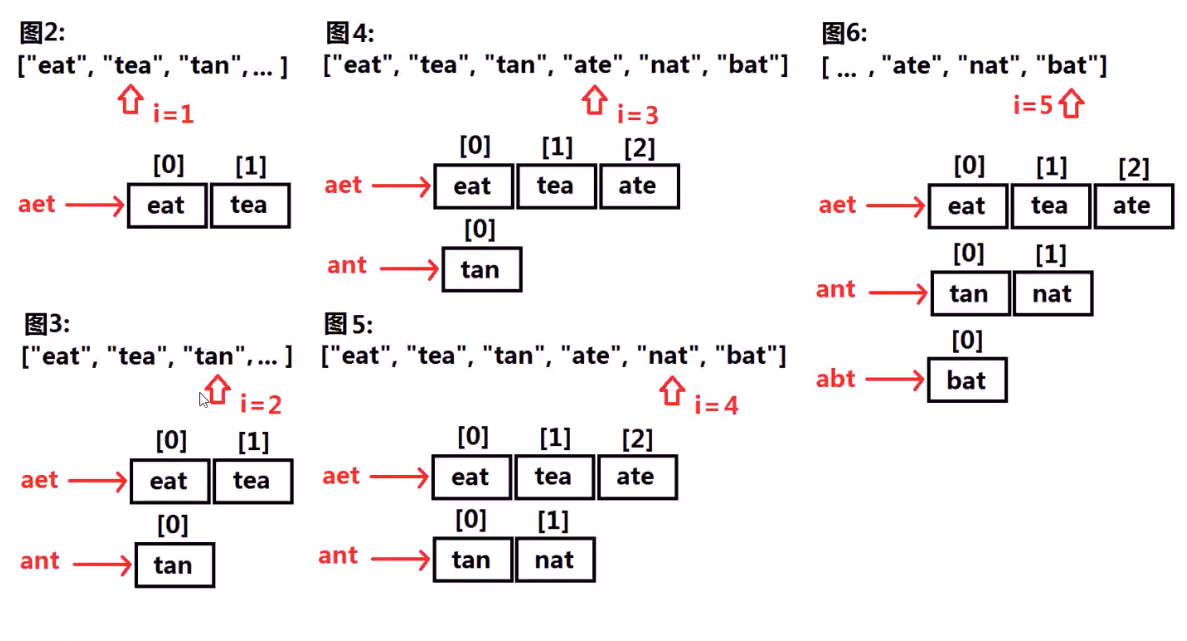
4.3 C + + code implementation
class Solution {
public:
vector<vector<string>> groupAnagrams(vector<string>& strs) {
map<string,vector<string>> anagram;
vector<vector<string>> result;
for(int i=0;i<strs.size();i++){
string str=strs[i];
sort(str.begin(),str.end());
if(anagram.find(str)==anagram.end()){
vector<string> item;
anagram[str]=item;
}
anagram[str].push_back(strs[i]);
}
map<string,vector<string>>::iterator it;
for(it=anagram.begin();it!=anagram.end();it++){
result.push_back((*it).second);
}
return result;
}
};
5. Longest substring without repeated characters
5.1 Title Description
Given a string, please find the length of the longest substring that does not contain duplicate characters.
Example 1:
input: s = "abcabcbb"
output: 3
explain: Because the longest substring without duplicate characters is "abc",So its length is 3.
Example 2:
input: s = "bbbbb"
output: 1
explain: Because the longest substring without duplicate characters is "b",So its length is 1.
Example 3:
input: s = "pwwkew"
output: 3
explain: Because the longest substring without duplicate characters is "wke",So its length is 3.
Please note that your answer must be the length of the substring,"pwke" It's a subsequence, not a substring.
Example 4:
input: s = ""
output: 0
5.2 algorithm ideas

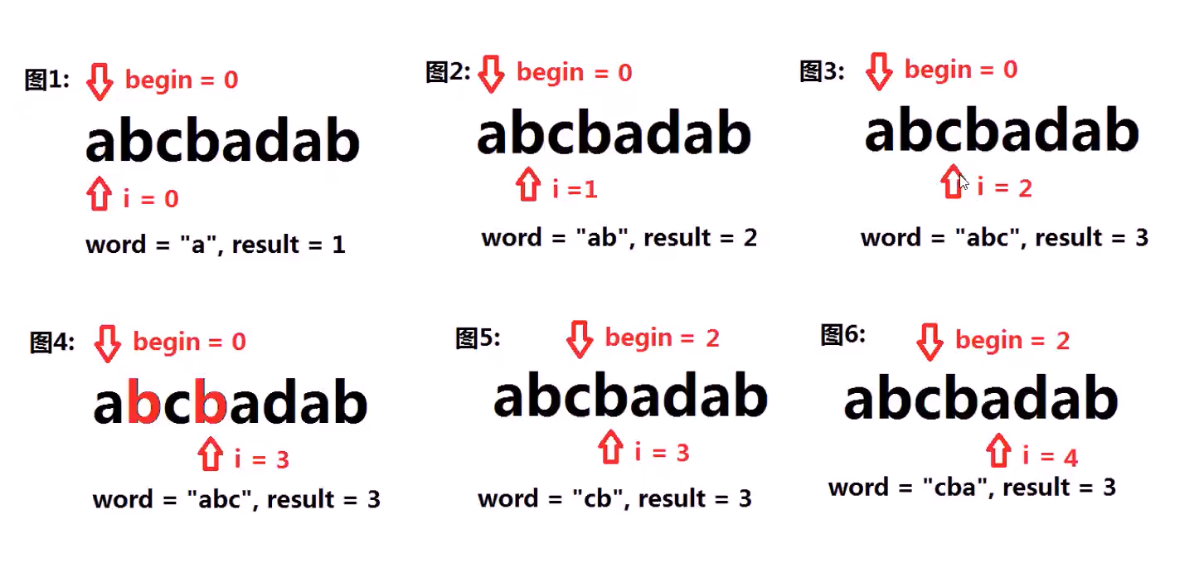
5.3 C + + code implementation
class Solution {
public:
int lengthOfLongestSubstring(string s) {
int begin=0;
int result=0;
string word="";
int char_map[128]={0};
for(int i=0;i<s.length();i++){
char_map[s[i]]++;
if(char_map[s[i]]==1){
word+=s[i];
if(result<word.length()){
result=word.length();
}
}
else{
while(begin<i&&char_map[s[i]]>1){
char_map[s[begin]]--;
begin++;
}
word="";
for(int j=begin;j<=i;j++){
word+=s[j];
}
}
}
return result;
}
};
6. Repetitive DNA sequences
6.1 Title Description
All DNA consists of A series of nucleotides abbreviated as' A ',' C ',' G 'and'T', such as "ACGAATTCCG". When studying DNA, identifying repetitive sequences in DNA can sometimes be very helpful.
Write a function to find all target substrings. The length of the target substring is 10 and appears more than once in the DNA string s.
Example 1: Input: s = "AAAAACCCCCAAAAACCCCCCAAAAAGGGTTT" Output:["AAAAACCCCC","CCCCCAAAAA"] Example 2: Input: s = "AAAAAAAAAAAAA" Output:["AAAAAAAAAA"]
6.2 algorithm ideas
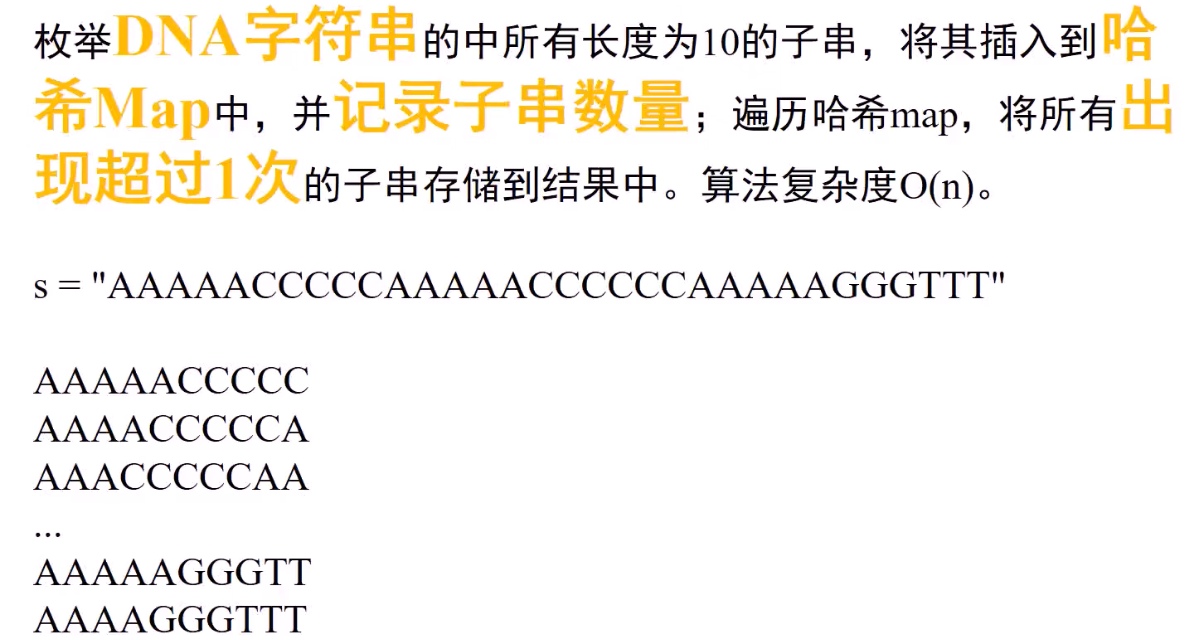
6.3 C + + code implementation
class Solution {
public:
vector<string> findRepeatedDnaSequences(string s) {
map<string,int> word_map;
vector<string> result;
for(int i=0;i<s.length();i++){
string word=s.substr(i,10);
if(word_map.find(word)==word_map.end()){
word_map[word]=1;
}
else{
word_map[word]++;
}
}
map<string,int>::iterator it;
for(it=word_map.begin();it!=word_map.end();it++){
if(it->second>1){
result.push_back(it->first);
}
}
return result;
}
};
7. Minimum coverage substring
7.1 Title Description
Give you a string s and a string t. Returns the smallest substring in s that covers t all characters. If there is no substring covering t all characters in s, the empty string "" is returned.
Note: if there is such a substring in s, we guarantee that it is the only answer.
Example 1: Input: s = "ADOBECODEBANC", t = "ABC" Output:"BANC" Example 2: Input: s = "a", t = "a" Output:"a"
7.2 algorithm ideas
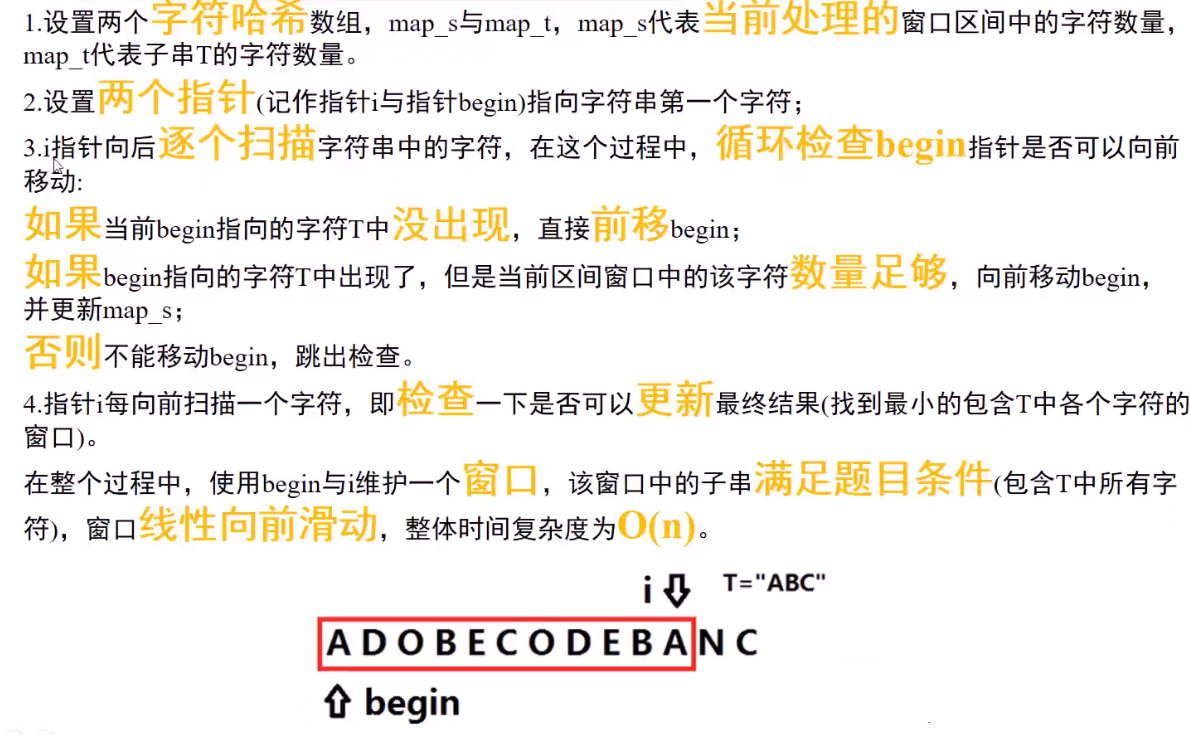
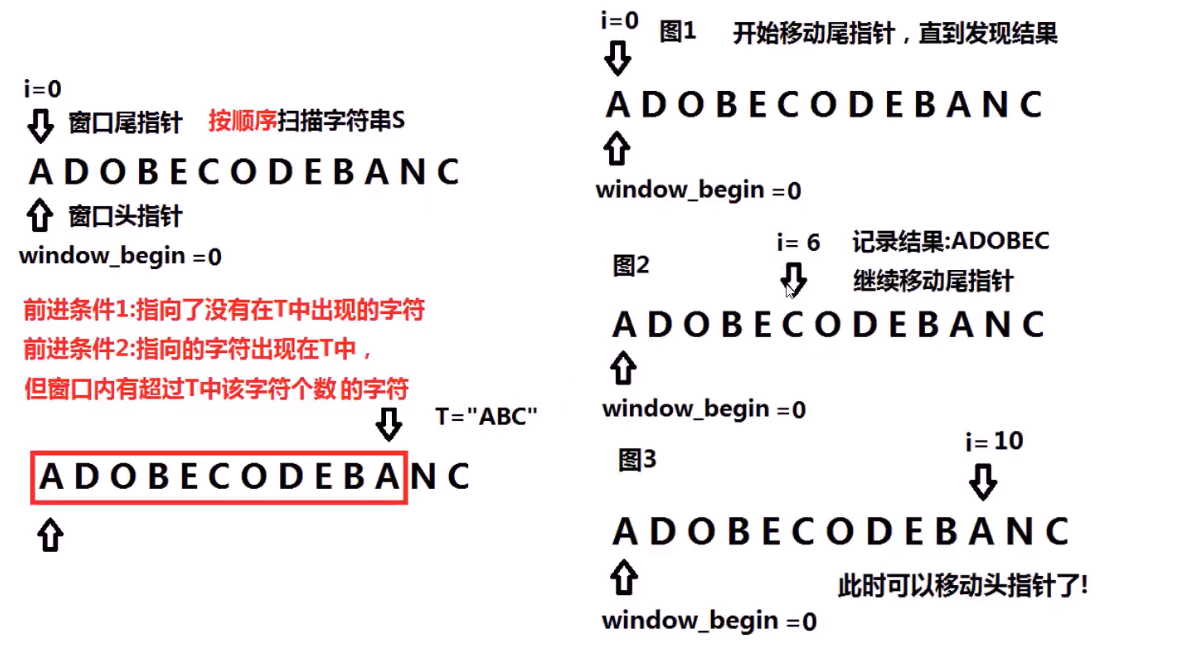

7.3 C + + code implementation
class Solution {
public:
bool is_window_ok(int map_s[],int map_t[],vector<int>& vec_t){
for(int i=0;i<vec_t.size();i++){
if(map_s[vec_t[i]]<map_t[vec_t[i]]){
return false;
}
}
return true;
}
string minWindow(string s, string t) {
int map_s[128]={0};
int map_t[128]={0};
vector<int> vec_t;
for(int i=0;i<t.length();i++){
map_t[t[i]]++;
}
for(int i=0;i<128;i++){
if(map_t[i]>0){
vec_t.push_back(i);
}
}
int window_begin=0;
string result;
for(int i=0;i<s.length();i++){
map_s[s[i]]++;
while(window_begin<i){
char begin_ch=s[window_begin];
if(map_t[begin_ch]==0){
window_begin++;
}
else if(map_s[begin_ch]>map_t[begin_ch]){
map_s[begin_ch]--;
window_begin++;
}
else{
break;
}
}
if(is_window_ok(map_s,map_t,vec_t)){
int new_window_len=i-window_begin+1;
if(result==""||result.length()>new_window_len){
result=s.substr(window_begin,new_window_len);
}
}
}
return result;
}
};